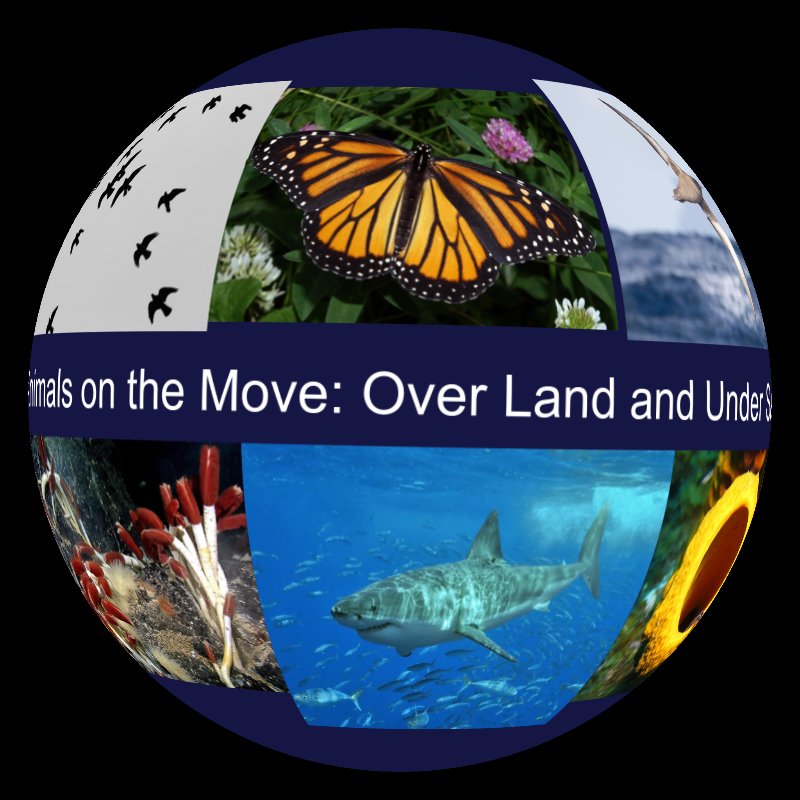Animals on the Move

Details
Permalink to Details- Added to the Catalog
- Available for
- SOS
- Categories
- Land: Live Programs
- Water: Live Programs
Description
Permalink to DescriptionAnimals on the Move: Stories of migration and dispersal over land and under sea
Permalink to Animals on the Move: Stories of migration and dispersal over land and under seaWhen the environment changes some animals stay, but others need to move to new locations. Some animals migrate with the seasons of the year, over land and in the ocean, too. Sometimes the environment can change drastically and abruptly, and this too can happen even in the ocean. In this presentation, we'll see how different animal species - from birds in the air to tubeworms in the deep sea - migrate or disperse to new locations as part of the dynamics and resilience of animal populations on Earth. The presentation also progresses through different rates of change and movement-- like seasonal, rapid, or long term and different ways of observing-- like satellite tracking, participatory science reporting, or mathematical modeling.
Animals on the Move is a partially scripted program with lots of room for expansion for any particular area of interest depending on your audience, location, or recent events. It may connect to presentations on population resilience, conservation, plant and animal adaptations and migrations, reproductive strategies of organisms, biodiversity, or rates of environmental change. Two supporting documents are included to help presenters follow developers’ thinking.
Key learning points
Permalink to Key learning points- How fast is the environment changing?
- How fast can populations of animals move to keep up with their changing environment?
- Are some populations at risk because they can’t keep up?
Resources
Permalink to Resources- Script
- Customizing suggestions
- Concept sequence
- Playlist is automatically added to your SOS system. In iPad remote app at the top, go to Live Programs > Water > Animals on the Move.
About Animals on the Move: This program was inspired by animal programs at the Buttonwood Park Zoo in New Bedford, MA and supported by research to better understand the population dynamics of organisms that live at deep-sea hydrothermal vents; funding was provided by NSF DEB-1558904 to M. Neubert, L. Mullineaux, and J. Kellner (WHOI). Additional documentation including credits for all data sources is available at Woods Hole Open Access Server (https://doi.org/10.26025/8ke9-av98 ).